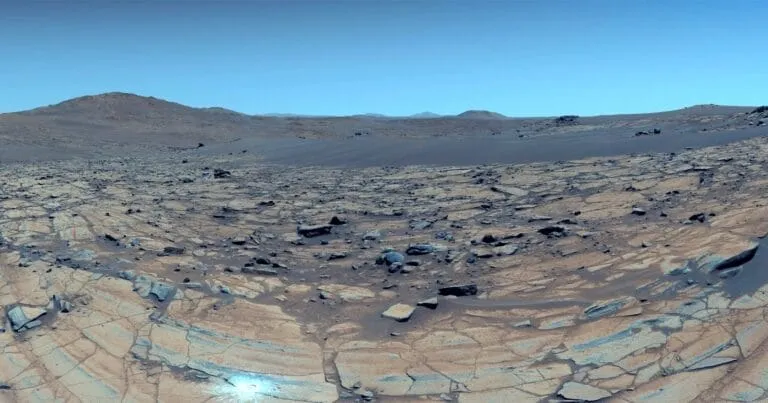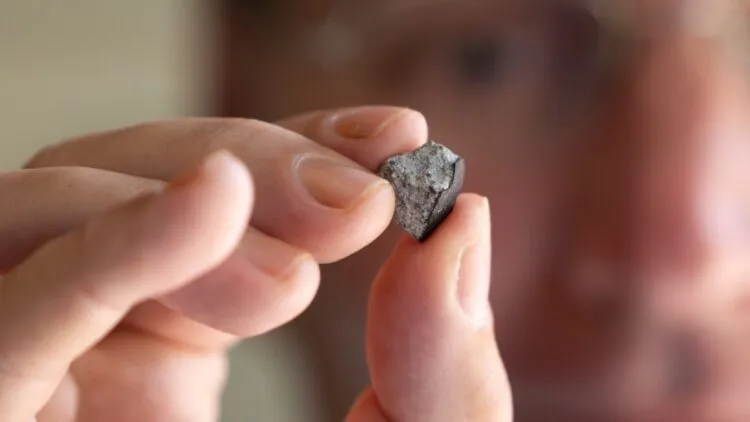NASA’s Perseverance Rover Captures Mesmerizing Blue Skies on Mars

NASA’s Perseverance rover has delivered a breathtaking 360-degree panorama of Mars, sparking awe across the internet. Captured on May 26, 2025, the image showcases a Mars that’s unexpectedly inviting, complete with what appears to be clear, blue skies that resemble Earth’s beauty. But there’s more than meets the eye—these skies aren’t quite as they seem.
A Mars That’s Full of Surprises
The panorama, taken at the site nicknamed “Falbreen,” represents a breakthrough in planetary photography. It was captured using Perseverance’s Mastcam-Z, a state-of-the-art camera system, and is hailed as one of the sharpest panoramas from the rover’s mission. The 360-degree view was assembled from 96 individual images, each crystal clear due to the rare, dust-free Martian skies.
Jim Bell, the principal investigator of Mastcam-Z at Arizona State University, explains, “The relatively dust-free skies provide a clear view of the surrounding terrain. In this particular mosaic, we’ve enhanced the color contrast, which helps highlight the differences between the terrain and the sky.”

Enhanced-color view of an area on Mars known as ‘Flabreen’, captured by NASA’s Perseverance Mars rover on 26 May 2025. Credit: NASA/JPL Caltech/ASU/MSSS

Natural-color view of the ‘Flabreen’ area on Mars, captured by NASA’s Perseverance Mars rover on 26 May 2025. Credit: NASA/JPL Caltech/ASU/MSSS
This enhancement is crucial in understanding why the image looks more Earth-like. NASA released two versions of the panorama—one enhanced with vibrant blue skies, and the other in natural colors revealing Mars in its characteristic reddish hue. The blue-sky version isn’t meant to deceive, but to help scientists differentiate between geological features and atmospheric conditions.
Despite its dusty reputation, Mars can surprise us with moments of astonishing clarity and beauty.
The Fascinating “Float Rock” Mystery
While the blue skies capture attention, there’s another curiosity within the panorama: a peculiar boulder. It appears to be casually resting atop a dark, crescent-shaped sand ripple. This isn’t an ordinary rock—it’s what geologists call a “float rock,” a geological anomaly that appears out of place. These rocks are formed elsewhere and somehow transported to their current location by natural forces.
This particular rock, about 14 feet away from Perseverance, has scientists stumped. Could it have been carried by ancient Martian waters? Did fierce winds drag it across the landscape, or was it moved during a landslide millions of years ago? The float rock’s position, perched on a sand ripple, suggests it was there before the ripple even formed. This surreal scene has led some to wonder if this is a natural art installation designed by Mars itself.
A Window Into Mars’ Ancient Past
Beyond its beauty, the Falbreen panorama is a geological goldmine. If you closely observe the middle of the image, you’ll notice a subtle color change in the landscape. This marks the boundary between two different geological units, each telling a different story of Mars’ ancient history.
The lighter-colored rocks near Perseverance are rich in olivine, while the darker rocks in the distance are believed to be clay-bearing formations, possibly some of the oldest terrain Perseverance has ever studied. These rocks might even predate Jezero Crater itself, providing clues about Mars’ early days.
This discovery highlights how much Mars has changed over the course of billions of years, and how much there is yet to learn.
Perseverance’s Journey to Falbreen
The panorama also offers a visual record of Perseverance’s journey on Mars. You can actually see the rover’s tire tracks snaking toward the horizon, marking its route to Falbreen. In 2024, Perseverance reached the rim of Jezero Crater, and from there, it carefully navigated to this new area.
The success of the mission, which began in February 2021, is the result of precise planning, cutting-edge technology, and engineering brilliance. On Sol 1,516 (a Martian day), Perseverance captured these images after carefully positioning itself for the perfect shot. Each image required meticulous coordination between scientists on Earth and the rover’s operators.
More Than Just a Pretty Picture
Though the panorama is mesmerizing, it also represents serious scientific work. The bright white circle seen near the bottom left of the image is not a piece of debris but an abrasion patch, the 43rd rock that Perseverance has scraped to reveal hidden layers of Martian terrain. This patch was created on May 22, just days before the panorama was captured, to analyze the rocks beneath Mars’ dusty surface.
This location, Falbreen, represents some of the oldest terrain Perseverance has encountered, making it an ideal site for “proximity science”—using the rover’s tools to perform detailed analysis of Mars’ rocks and soil.
Behind the Technology: Making the Magic Happen
Creating such a detailed panorama requires advanced technology and precision. Perseverance’s Mastcam-Z instrument system is far more than just a camera. It captures images in multiple wavelengths of light, performs 3D imaging, and provides a detailed color analysis of the Martian landscape. This sophisticated system allowed scientists to take advantage of rare dust-free conditions on Mars, which are usually interrupted by dust storms that obscure visibility.
Stitching together 96 individual images to create a seamless panorama is a technical achievement. Aligning and processing each photo, then enhancing the contrast in the blue-sky version, required extensive expertise and planning.
What This Means for Future Mars Exploration
The success of this panorama signifies more than just an artistic achievement. It provides invaluable data for future Mars missions. As NASA’s acting administrator, Sean Duffy, remarked, “Stunning vistas like that of Falbreen… are just a glimpse of what we’ll soon witness with our own eyes.”
Understanding the geological composition and atmospheric conditions at sites like Falbreen will guide the planning of future Mars missions, including those involving human explorers. The clarity and detail in this panorama demonstrate how far Mars exploration technology has come, from early black-and-white photos to high-resolution imagery rivaling Earth’s finest photographs.
Changing Our View of Mars
Images like the Falbreen panorama are transforming how we think about Mars. Instead of seeing the Red Planet as a barren wasteland, we’re starting to view it as a vibrant, dynamic world full of geological wonders. This shift in perspective could shape future exploration, from scientific missions to public support for future Mars endeavors.
The Human Element in Robotic Exploration
Behind every stunning image from Mars, there’s a team of dedicated scientists and engineers working tirelessly. The Falbreen panorama was a collaborative effort involving mission planners, imaging specialists, atmospheric scientists, and data experts.
Jim Bell and his team at Arizona State University, operating the Mastcam-Z, are just one part of the mission that is managed by NASA’s Jet Propulsion Laboratory. This teamwork underscores the importance of human creativity, expertise, and collaboration in space exploration.
Conclusion: The Road Ahead
The Perseverance rover’s stunning panorama from Falbreen is more than just a beautiful image. It’s a significant milestone in the exploration of Mars, providing a glimpse into the ancient geological history of the Red Planet. As we continue to study these images, it becomes clear that we are just beginning to uncover the mysteries of Mars.
And with the advancements in technology and human ingenuity, we can only imagine what discoveries await us in the years to come. Mars is no longer a distant, mysterious planet—it’s a world full of surprises, waiting to be explored.




